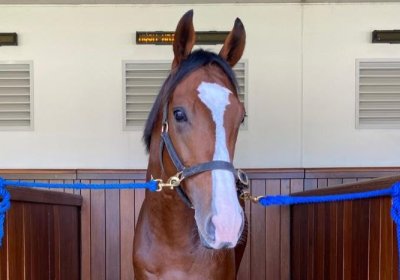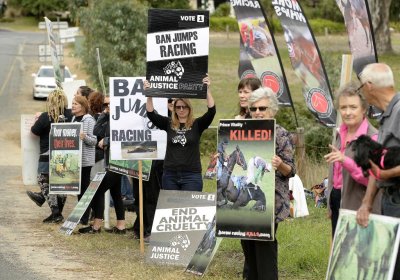Cock fighting and dog fighting were regarded as legitimate sports, but are now rightly seen as cruel and barbaric. Horse racing should also be banned, argues Mary Merkenich.
Horse, harness and jumps racing
There are calls for the remainder of the Warrnambool jumps carnival to be called off after a horse was killed in the first jumps race on May 3.
Two other horses fell in the same race and 40% of horses did not finish their races.
The fatality comes after the death of Wheeler Fortune at the Oakbank carnival last month which prompted the SA Racing Minister Leon Bignell to label jumps racing “barbaric”.
The South Australian Racing Minister Leon Bignell has called on the state’s horseracing authority to ban jumps racing after five-year-old Wheeler Fortune was euthanised on April 15 after falling during the Somerled Hurdle race in Oakbank.
Bignell called on Thoroughbred Racing SA to act, labelling jumps racing “cruel and “barbaric”. But the controlling body said jumps racing was an “integral part” of the sport and would continue.
Harness Racing Australia (HRA) announced on December 10 it would ban the use of whips in both racing and training from September 1 next year. This will make Australia the first country in the world to implement a ban on whips.
HRA chairman Geoff Want said the decision was taken for animal welfare reasons. "There is compelling evidence these days that society will not tolerate continued cruelty towards animals," he said.
Want said he believed some in the industry would resist change but "people are going to have to adapt to change".
In a reaction to the NSW government banning greyhound racing, Racing NSW announced on September 13 that it will introduce a 1% levy on the $204 million it pays in prize money to look after horse welfare.
Racing NSW will form a new department, including vets and staff to retrain racehorses and place them within the horse community beyond their time on the track.
Its role will be to establish partnerships with riding schools, pony clubs and other equestrian organisations to promote re-homing of thoroughbreds.




